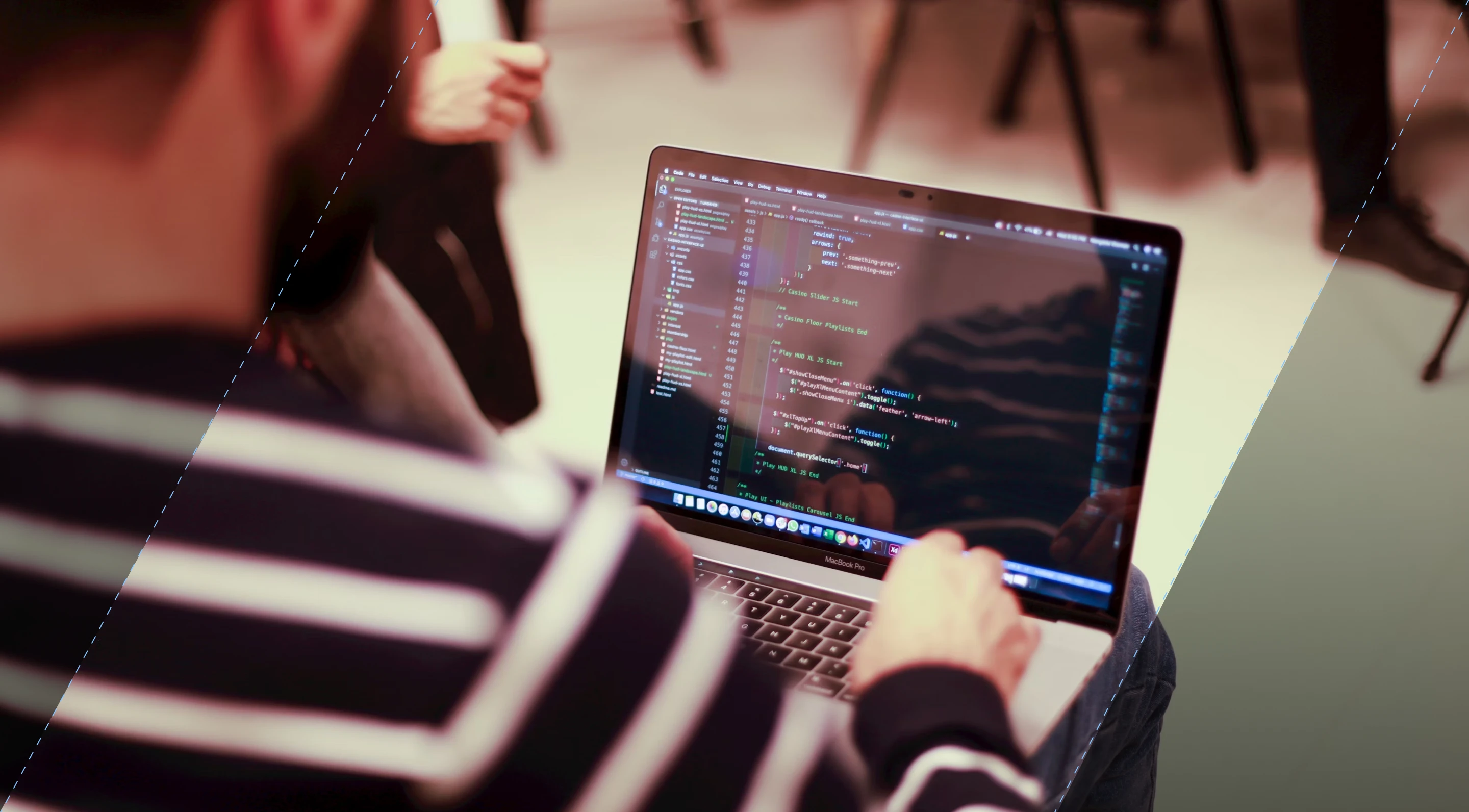SHARE
What is the Difference Between Haptic and Vibration?

Contents
Contents
Introduction
When it comes to technology, haptic and vibration are two terms that are frequently used interchangeably. While they both refer to mechanisms that provide tactile feedback to the user, there are differences between the two that are worth exploring.
This article will delve into the nuanced distinctions between haptic feedback and vibration alerting. As we unravel these differences, we’ll also shed light on how our team at Flatirons utilizes both technologies to enrich user interactions in our custom mobile app development services.
By the end of this exploration, you’ll have a comprehensive understanding of how each technology contributes uniquely to enhancing our digital experiences.
Key Takeaways:
- Haptic feedback and vibration alerting refer to mechanisms that provide tactile feedback to the user.
- Haptic feedback involves a broader range of sensations than vibration alerting and is more closely related to the user’s sense of touch.
- Vibration alerting focuses primarily on creating a mechanical vibration to capture the user’s attention.
- Both haptic feedback and vibration alerting have unique benefits and play important roles in enhancing the user experience with technology.
- Understanding the difference between the two is crucial for designers, developers, and consumers alike.
Understanding Haptic Feedback
Are you familiar with haptic feedback? Derived from the Greek phrase “haptikos,” it refers to the sense of touch and how we experience it through technology. Haptic feedback involves the use of actuators that simulate tactile feedback, producing sensations such as pressure or vibration to provide a realistic sense of touch when interacting with devices.
Haptic technology has been around for decades but has gained more widespread use in recent years with applications ranging from mobile devices to medical simulators. One example is the use of haptics in virtual reality systems, where users can experience a fully immersive environment through simulated touch feedback.
The mechanisms behind haptic feedback vary but typically involve a combination of motors or piezoelectric actuators to create pressure or vibration. Tactile feedback can also be triggered by surface textures or changes in temperature.
Haptic technology can enhance user experiences in a variety of ways, such as improving accessibility for users with visual impairments or allowing for more precise control in gaming applications. Overall, haptic feedback offers a unique and immersive way to interact with technology.
Exploring Vibration Alerting
When it comes to conveying information to the user, vibration alerting is a valuable tool used in devices such as smartphones, wearables, and gaming controllers. Vibrations are created using vibration motors and switches, which can be controlled to send a signal to the user in the form of a vibration. This allows for communication in situations where the user may not be able to look at the screen or object in question.
There are a variety of advanced waveforms that can be used to create intricate vibration patterns, conveying different types of information to the user. For example, a quick, sharp vibration could signal an incoming call or message, while a longer and more gradual vibration could indicate a low battery. The complexity of the vibration pattern continues to evolve, providing designers and developers with new ways to communicate with users.
The Difference Between Haptic Feedback and Vibration Alerting
When it comes to technology, haptic feedback and vibration alerting are often used interchangeably. However, there are distinct differences between the two.
Haptic feedback involves a broader range of sensations and is more closely related to the user’s sense of touch, providing tactile feedback through an actuator that simulates the sensation.
On the other hand, vibration alerting focuses primarily on creating a mechanical vibration to capture the user’s attention, with a motor being used to vibrate an object or screen.
While both technologies have a role in enhancing the user experience, understanding the difference between the two is crucial when designing and developing technology.
Haptic feedback can create a more immersive and realistic experience, while vibration alerting can quickly convey information to the user. Depending on the application, one may be more suitable than the other.
So, the next time you feel a subtle vibration from your smartphone or experience a rumbling sensation in a virtual reality game, you’ll know the difference between haptic feedback and vibration alerting.
Applications and Advancements in Haptic Technology
Haptic technology is revolutionizing the way we interact with digital applications, bringing a whole new level of engagement and realism. In virtual reality, haptic feedback makes it possible to simulate an array of sensations, from the gentleness of a breeze to the jolt of an impact. This technology is vital in creating fully immersive VR experiences that truly trick the senses.
In the gaming industry, haptic technology is a game-changer. It’s used to create more dynamic gaming experiences with features like rumble, kinesthetic feedback, and complex vibration patterns. These advancements allow players to feel more connected to the game, with physical sensations that correspond to in-game actions.
Smartphone interfaces have also greatly benefited from haptic advancements. Gone are the days of simple vibration alerts. Now, smartphones can replicate the feeling of real-world actions like pressing a button or the tactile sensation of typing on a keyboard. This not only makes smartphones more intuitive to use but also adds a layer of sophistication to the user interface.
At Flatirons, we’re at the forefront of utilizing haptic technology in our app development services. By incorporating advanced haptic features into our app designs, we aim to provide users with engaging, intuitive, and interactive applications.
Whether it’s for gaming, education, or productivity apps, we leverage haptic technology to deliver unique experiences that resonate with users on a deeper level. Our team is constantly exploring the limits of what’s possible with haptic feedback, ensuring that our clients always stay ahead in the competitive world of app development.
Advancements in Haptic Technology
The development of more precise haptic feedback technology is driving a significant increase in the complexity of vibration patterns. This means that developers can create more nuanced and sophisticated user experiences by manipulating the intensity, duration, and frequency of vibrations.
Additionally, the use of multiple actuators allows for a wider range of sensations, from subtle textures to sharper impacts that add to the realism of the experience.
Consumer demand for superior haptic technology has led to a rapid increase in research and innovation in this field, pushing the boundaries of what is possible in haptic feedback technology.
Conclusion
Well done on making it through this article on the differences between haptic feedback and vibration alerting. Now you’ve got a solid grasp on how these two technologies are unique and how they’re making our interactions with tech so much better.
Whether you’re designing the next big app, developing cool new tech, or just love staying on top of the latest gadgets, understanding haptic feedback and vibration alerting can really change how you see and use technology. We’re heading into a future where haptic feedback gets even more precise and vibration patterns become more complex, making our experiences with technology even more awesome.
We hope it’s been an eye-opener and helps you see the possibilities of these technologies.
FAQ
What is the difference between haptic and vibration?
Haptic refers to a broader range of sensations that simulate the sense of touch, providing tactile feedback. Vibration, on the other hand, involves creating mechanical vibrations to convey information or capture the user’s attention.
What is haptic feedback?
Haptic feedback is a technology that utilizes actuators to simulate the sense of touch when interacting with devices. It enhances user experiences by providing tactile sensations, such as vibrations, textures, or even the feeling of pressing a button.
How does vibration alerting work?
Vibration alerting involves using a motor or switch to create mechanical vibrations in a device, such as a smartphone or controller. These vibrations are used to communicate and convey information to the user, often as a form of notification or alert.
What is the difference between haptic feedback and vibration alerting?
The main difference lies in their purpose and scope. Haptic feedback aims to provide a realistic sense of touch and a wider range of tactile sensations, while vibration alerting focuses primarily on creating mechanical vibrations to capture the user’s attention.
What are some applications of haptic technology?
Haptic technology has various applications across industries. It is commonly used in virtual reality experiences, gaming, smartphone interfaces, and medical simulations. It can enhance the user’s immersion by providing kinesthetic feedback and precise haptic sensations.
IoT Development Services
Harness the power of IoT with Flatirons' innovative IoT development services.
Get the CEO's Take
Handpicked tech insights and trends from our CEO.
IoT Development Services
Harness the power of IoT with Flatirons' innovative IoT development services.
Get the CEO's Take
Handpicked tech insights and trends from our CEO.

Perl vs Python: Choosing the Right Scripting Language
Flatirons
Apr 20, 2025
IoT Database: Manage Connected Device Data Efficiently
Flatirons
Apr 14, 2025
Proof of Concept Template: A Step-by-Step Guide
Flatirons
Mar 26, 2025
Objective C vs Swift: Which is Better for iOS App Development?
Flatirons
Mar 25, 2025
Scala vs Kotlin: Comparing the Functional Programming Giants
Flatirons
Mar 22, 2025
IoT Smart City Solutions: Transforming Urban Living
Flatirons
Mar 17, 2025